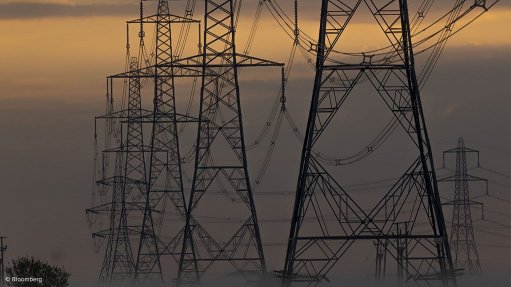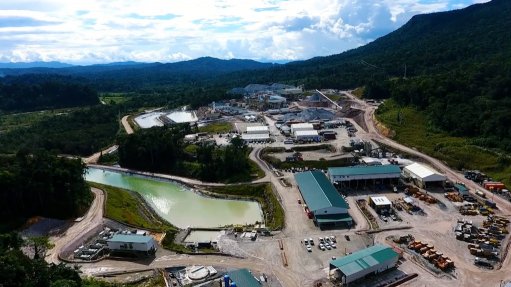Mining in Botswana
This article has been supplied as a media statement and is not written by Creamer Media. It may be available only for a limited time on this website.
Company Announcement - As an International Trade Fair focused on mining and construction in Africa, particularly within the Southern African Development Community (SADC), the Organizers of BAUMA CONEXPO AFRICA 2015 look on excitedly as the mining industry continues to develop in Botswana. Particularly as bauma Africa 2013 welcomed a number of visitors from the country.
Botswana’s Minister of Finance and Development Planning, Kenneth Matambo said in his 2015/16 budget speech on 2 February that the country’s economic growth is expected to slow slightly to 4.9% in 2015, from an estimated 5.2% last year. This is still ahead of the regional growth curve, which the World Bank set at 4.5% in 2014 and projects at 5.1% “despite headwinds” by 2017 in its Global Economic Prospects report published in January 2015.
In spite of its size and landlocked nature, Botswana does indeed have the capacity to become a bigger player in SADC, particularly in the context of the seemingly less stable economies around it. “Sound macroeconomic policies, good governance, well-functioning institutions and judicious management of diamond resources are the hallmarks of Botswana’s remarkable economic performance,” reports the African Development Bank Group in its African Economic Outlook 2012 on Botswana. At the time of the report (2012), per capita income stood at around $6 500, compared to $70 in 1966, having been significantly bolstered by the discovery of diamonds. Matambo estimates that the mining sector will contribute nearly 30% of the Botswana government’s revenue in 2015/16. Interestingly, over the years, the economy has moved away from the mining sector. “While in 2006 the mining sector accounted for 46.1% of GDP, in 2010 the sector’s contribution has declined to 34.7% in favour of manufacturing, construction and service orientated sectors,” reveals African Economic Outlook 2012.
This continues to be an astute revolution as weakened demand from the US, Europe, India and China continues to negatively impact commodity prices. “Economic sentiment in the US and Europe will be a critical detriment of economic development in Botswana through its impact on diamond demand, as well as investment decisions in the country’s infrastructure and mining sector,” noted KPMG’s 2013 Quarter 1 Botswana Snapshot, a notion still in play today.
However, as coal continues to power the developing world, in particular India and China, we are extremely encouraged to observe the diversification of the mining industry in Botswana. According to Bloomberg, of the seven coal companies active in the country, four are at pre-feasibility stage and two at exploration. “Jindal Africa, a unit of India’s Jindal Steel & Power Ltd. received a mining license in August and plans to start production for export next year,” reports Bloomberg. As reported in Mining Weekly recently, Walkabout Resources Ltd. has completed its scoping study into the Takatokwane thermal coal project, estimating that it would cost $767-million to develop. “Based on the 12-million-tonne-a-year output, the Takatokwane mine was currently estimated to International Trade Fair for Construction Machinery, Building Material Machines, Mining Machines and Construction Vehicles
September 15 –18, 2015 Johannesburg, South Africa www.bcafrica.com have a net present value of $850-million and an internal rate of return of 14%”. However, the development of the project is hugely dependent on railway infrastructure construction.
The plan for the Trans-Kalahari Railway is a positive development in railway capacity for the entire region. For Botswana in particular, it will enable producers to transport coal from the landlocked country to markets in China and India. Until then, we commend mining companies for taking advantage of existing infrastructure, including rail capacity to ports in Mozambique and South Africa. “You cannot sit down and wait for the Trans-Kalahari Railway; that would be a disaster,” said Charles Siwawa, Botswana Chamber of Mines CEO, in January, according to Bloomberg.
“As Africa’s premier Mining and Construction Trade Fair which celebrates forward thinkers and pioneers in both industries, we look forward to welcoming key players from Botswana to BAUMA CONEXPO AFRICA 2015,” says Elaine Crewe, CEO of BAUMA CONEXPO AFRICA. The event will take place from 15– 18 September 2015 at the Johannesburg Expo Centre.
Comments
Press Office
Announcements
What's On
Subscribe to improve your user experience...
Option 1 (equivalent of R125 a month):
Receive a weekly copy of Creamer Media's Engineering News & Mining Weekly magazine
(print copy for those in South Africa and e-magazine for those outside of South Africa)
Receive daily email newsletters
Access to full search results
Access archive of magazine back copies
Access to Projects in Progress
Access to ONE Research Report of your choice in PDF format
Option 2 (equivalent of R375 a month):
All benefits from Option 1
PLUS
Access to Creamer Media's Research Channel Africa for ALL Research Reports, in PDF format, on various industrial and mining sectors
including Electricity; Water; Energy Transition; Hydrogen; Roads, Rail and Ports; Coal; Gold; Platinum; Battery Metals; etc.
Already a subscriber?
Forgotten your password?
Receive weekly copy of Creamer Media's Engineering News & Mining Weekly magazine (print copy for those in South Africa and e-magazine for those outside of South Africa)
➕
Recieve daily email newsletters
➕
Access to full search results
➕
Access archive of magazine back copies
➕
Access to Projects in Progress
➕
Access to ONE Research Report of your choice in PDF format
RESEARCH CHANNEL AFRICA
R4500 (equivalent of R375 a month)
SUBSCRIBEAll benefits from Option 1
➕
Access to Creamer Media's Research Channel Africa for ALL Research Reports on various industrial and mining sectors, in PDF format, including on:
Electricity
➕
Water
➕
Energy Transition
➕
Hydrogen
➕
Roads, Rail and Ports
➕
Coal
➕
Gold
➕
Platinum
➕
Battery Metals
➕
etc.
Receive all benefits from Option 1 or Option 2 delivered to numerous people at your company
➕
Multiple User names and Passwords for simultaneous log-ins
➕
Intranet integration access to all in your organisation


















